
Product Description
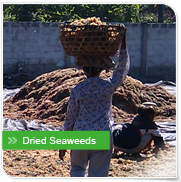
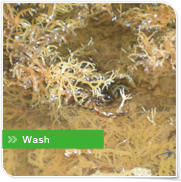
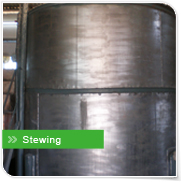
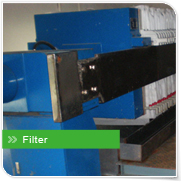
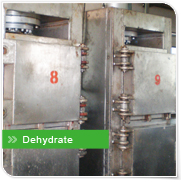
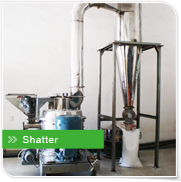
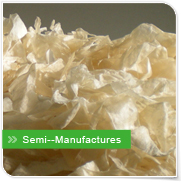
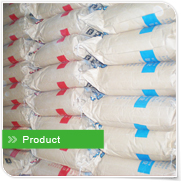
Carrageenan
General characteristics
Carrageenan is generally a white to yellowish brown powder that is odorless, tasteless, and some have a somewhat seaweed taste. Carrageenan gel is thermoreversible, i.e., the gel melts into solution upon heating and the solution gels again on cooling.
Physicochemical properties
Carrageenan is not toxic, and possesses gelation, solubility, stability, viscosity and reactivity properties. It is therefore used as a gelling agent, thickener, emulsifier, suspending agent, binding agent, forming agent and stabilizer in the food manufacturing industry.
Applications in the food industry
Carrageenan has a long history of use as a natural food additive. It is a harmless plant fiber that aids digestion and has broad applications. Overseas commercial production of carrageenan began in the 1920s, while China only started producing carrageenan for commercial use in 1985, 80% of which are used in food or food-related industries.
3.1 Gelling agent
Carrageenan can form semi-solid gels. It is an excellent gelling agent for making jelly as it solidifies at room temperature to produce a set gel that is semi-solid, highly transparent, and not prone to collapse. It can also be used as a nutritional supplement substance in jelly powders that can be conveniently prepared by dissolving in water. Carrageenan can also be used as a gelling agent for making milk and fruit puddings, the products are characterized by low water separation, delicate texture, low viscosity, and good heat transfer. It can be added for gelation to make adzuki bean jelly. Canned jellies produced using carrageenan as the gelling agent are convenient to use and transport, while its fruit content also provides better nutrition than regular jellies. Carrageenan can also be used as a gelling agent in canned meats.
The use of carrageenan as a gelling agent for making transparent soft candies will produce candies that are highly transparent, refreshing and do not stick to the teeth. Addition of carrageenan to regular hard candies will give the product a uniform texture, smoothness, and increased stability.
3.2 Stabilizer
Dry carrageenan powder is very stable and will not degrade quickly during prolonged storage. Carrageenan solutions is very stable under mild basic or neutral conditions, but is unstable and tend to hydrolyze under acidic conditions.
Carrageenan can be used as a stabilizer in ice creams that ensures homogenous distribution of fat and other solid ingredients to prevent whey-off and ice crystal growth during production and storage, giving the ice cream a fine texture, improved structure, and smooth and palatable. Addition of carrageenan is necessary in infant formula and soy foods to stabilize and prevent the separation of fat and protein. Addition of carrageenan as a stabilizer in coffee or tea extracts enables the production of dry powder or cream products that is extremely convenient and can be prepared by mixing with warm water. Addition of carrageenan in fruit yogurts gives the product an even and stable texture to prevent thermal and acid decomposition, improve suspension of pulp and reduce water separation.
3.3 Suspending agent
Carrageenan can be used as a suspending and stabilizing agent in fruit juices. Addition of carrageenan uniformly suspends fruit pulp particles in juices. Carrageenan added to cocoa milk reacts with proteins to suspend the cocoa powder without settling.
3.4 Forming agent
Addition of carrageenan to various decorative patterns and words on Western-style desserts such as cream pastries and cakes helps to form patterns that do not deform or collapse easily, or stick to packaging. Addition of carrageenan for making cheese products helps to form a stable paste that maintains its shape without running.
3.5 Clarifying agent
Carrageenan is a polysaccharide with a negative charge, the molecule contains hemisulfate groups that react with protein. Carrageenan is often used as a clarifying agent in wine, vinegar, and soy sauce. Carrageenan is used as a clarifying agent in beer production to effectively remove protein that clouds beer so that the product is clear and transparent, while also improving foam lacing and stability of the beer.
3.6 Thickener
Carrageenan forms highly viscous solutions because of their non-branching and linear macromolecular structure, and polyelectrolyte properties. Addition of carrageenan as a thickener in seasonings such as soy sauce, fish sauce and shrimp paste will improve product consistency and enhance flavor. Carrageenan is also useful for preparing Western-style salads. Carrageenan can be added to adzuki bean paste to act as thickening agent, gelling agent and stabilizer so that the product is well-dispersed and has a good mouthfeel.
3.7 Binding agent
Carrageenan forms highly viscous solutions, and can be used as an effective gelling or binding agent in canned jam or caviar.
Future applications
Carrageenan is a natural substance with superior characteristics such as strong reactivity, ability to form gels and highly viscous solutions, and high stability. Its protein reactivity is unique among water-soluble polymers. Its elasticity, transparency, and solubility are satisfactory and help broaden its scope of application. Its safe and non-toxic properties have been confirmed by the Joint FAO/WHO Expert Committee on Food Additives (JECFA). The committee also regarded carrageenan as having a wide range of applications in the food and chemical industries, as well as in biochemical and medical research. Rapid worldwide development and increased demand for carrageenan in recent years are due to the fact that its unique function cannot be replaced by other resins, resulting in the rapid development of the carrageenan industry. The world's annual output of carrageenan has far exceeded agar production.
Carrageenan was first widely used in Europe and the United States. Total world production of carrageenan is second highest among edible gums extracted from seaweeds. In recent years, China has listed carrageenan as a food additive. Carrageenan has also been included in the FAO and WHO food standards. In short, carrageenan meets both Chinese and foreign food standards and has a bright and promising future.